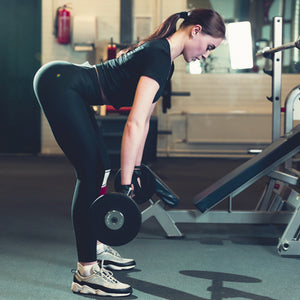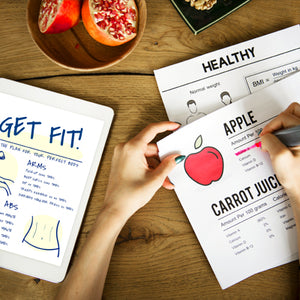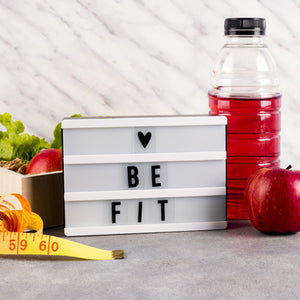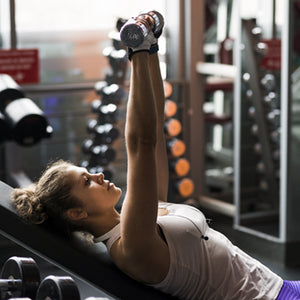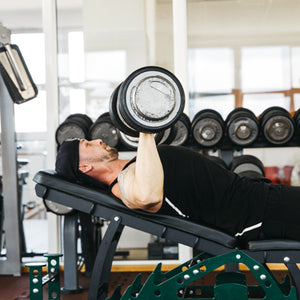
Tan for Health - Benefits, Negatives, and Recommendations
We witnessed pictures of crispy, elderly people from Florida holding up tinfoil reflectors as they basked in the sun, wrinkles glaring. But vitamin D deficiency is a huge issue. It can even be deadly. The cure? Sunlight or UV rays.
Related: 10 Vitamin D Foods You Should Be Eating Now
In one study done over an eight-year span, researchers found that lower vitamin D levels more than doubled the risk of dying from heart disease compared with those with higher vitamin D levels. They also hypothesized that this deficiency can be caused by less sun exposure. [1]
What is it? Is sunlight deadly or healthy? We need to look at the vitamin D effect.
Sun exposure also helps produce cholesterol sulfate. This is very important for heart and cardiovascular health. It also produces vitamin D3 sulfate, which is water soluble.
And with the sun, you can't "overdose." Your body produces vitamin D from it, and self-regulates how much you need. Because of this, being in sunlight is far superior to vitamin D supplementation.
But what to do when there is no sun? Tanning beds. But before we delve into that, let's explore the positives and negatives of tanning. I will recommend something for you to optimize your own health with tanning!
The Negatives of Tanning
 CANCER! The CDC's statement, which is contrary to independent research (the government obviously doesn't care about dat der science), is as follows:
CANCER! The CDC's statement, which is contrary to independent research (the government obviously doesn't care about dat der science), is as follows:"Indoor tanning and tanning outside are both dangerous. Although indoor tanning devices operate on a timer, the exposure to UV rays can vary based on the age and type of light bulbs. Indoor tanning is designed to give you high levels of UV radiation in a short time. You can get a burn from tanning indoors, and even a tan indicates damage to your skin."
And..."Although it is important to get enough vitamin D, the safest way to do so is through what you eat. Tanning harms your skin, and the amount of UV exposure you need to get enough vitamin D is hard to measure because it is different for every person and varies with the weather, latitude, altitude, and more."
While they do cite two studies that link tanning to melanoma, the CDC's stance on vitamin D and the sun versus supplementation and food is downright silly. [2] I am not saying this is illuminati-driven, but I am saying they appear to be ignoring data that doesn't support their stance.Aging. For this we go to the FDA. The theme of this article is to contrast the negatives, generally government-driven, to the positives, generally private-research driven. I didn't intend for it to be this way, but by following the data there were distinctions between government agencies and private practice (like the infamous Dr. Mercola who recommends tanning beds and sunlight) was hard to ignore. [3]
The FDA states, "Premature aging is a long-term side effect of UV exposure, meaning it may not show on your skin until many years after you have had a sunburn or suntan. Avoiding UV exposure is essential to maintaining healthy skin."
We will leave it at that, 'nuff said.
Let's delve into the positives, my opinion, and then YOU make the choice. And for the record and to appease my attorneys, I am NOT a doctor, so don't listen to me, and consult your doctor instead.
Benefits of Tanning
In addition to the vitamin D benefits, here are some other positives.
Cancer: Can tanning PREVENT cancer? Now prepare to be confused? Per Professor Angus Dalgleish, writing in the Daily Mail:
"Research shows that a large percentage of people in the UK are deficient in vitamin D partly because we can't make any from the sun for about six months of the year ... i'd like to see all other cancer units automatically checking their patient's blood levels. It's cheap and quick and I guarantee they would be amazed at just how low many were."
It may sound shocking that the sun - demonized for decades as the cause of skin cancer - may actually help protect you from the same fate when sensible exposures are used. There is compelling evidence to support this.
Dr. William Grant, Ph. D, a revered Vitamin D expert, even states that 30 percent of cancer deaths can be prevented with adequate vitamin D per year due to vitamin D's cancer-fighting benefits. [5]
So, the very thing the FDA and CDC says will kill you from cancer is now shown in research to do the opposite. Interesting?
SAD (Seasonal Affective Disorder): "Seasonal affective disorder (SAD) is a category of depression that emerges in particular seasons of the year. Most people notice SAD symptoms starting in the fall and increasing during the winter months, but a few people experience a spring/summer version." [6]
Basically, when you don't get sun, like me in the Midwest during winter months, you can get this. Now, most government websites and "experts" say that tanning will not help this, but Vitamin D has been implicated in depression. [7] This, by connection and through personal experience, leads me to believe that indoor tanning when no sun is out will help with this issue. [8]
Mood: People just tend to feel good after tanning. It is relaxing, helps with relaxation hormones, and is a welcome break from indoor tanning. The thought used to be that tanning increased endorphins and that caused this feeling, but that has since been debunked. [9]
What I Recommend
"Sun exposure is beneficial in moderation, but can be harmful in excess. Sun exposure guidance should be tailored to the individual patient. Individual factors such as skin type, past history of skin cancers, and concurrent medical conditions should influence counseling practices." [10]The best recommendation I have found is to tan for enough time until you have a slight-pink appearance to your skin. Obviously, as you tan and get darker, this will increase in darkness for most. For me, I tan for 5 or so minutes in a 10-minute bed once per week since I mainly work an office job.
If you work outdoors, you are probably good to go. Be sure to use protective suntan lotion to prevent burning. We do not want to burn, we want smart, prudent exposure to the sun.
If going to the pool for hours, even if you have a base tan, the base isn't enough. Data has shown that the "base tan", although touted by the Indoor Tanning Association as having a protective benefit, only has an SPF Equivalent of 3-4. [11]
The Take-Home
Click here to order Vitamin D now
In the winter hit the tanning bed one to two times per week if located in an area where you will not be exposed to sunlight. Start LOW (if a ten-minute bed, start at 2-3 minutes) and aim for a slight "pink" tone to your skin if fair-pigmented.
Never exceed the maximum time set for your tanning bed. If darker-complexion, you can still benefit from some tanning. Use the same guidelines but halt the tan at the max time limit set for that bed.
If tanning outside, ONLY aim to turn that "slight-pink" tone. ALWAYS use sunscreen with an SPF of 30 or more if in the sun for a very long period of time. Burning is NOT good. [12]
If you cannot get into the sun, supplement with 5,000IU vitamin D3 per day. Here is a GREAT option.
References
1) "25-Hydroxyvitamin D Levels and the Risk of Mortality in the General Population | Cardiology | JAMA Internal Medicine | The JAMA Network." The JAMA Network | Home of JAMA and the Specialty Journals of the American Medical Association, jamanetwork.com/journals/jamainternalmedicine/fullarticle/770360.2) "CDC - Indoor Tanning - Skin Cancer." Centers for Disease Control and Prevention, www.cdc.gov/cancer/skin/basic_info/indoor_tanning.htm.
3) "Taking Oral Vitamin D? Avoid Making This Serious Mistake." Mercola.com, articles.mercola.com/sites/articles/archive/2012/02/23/oral-vitamin-d-mistake.aspx.
4) "The Risks of Tanning." U S Food and Drug Administration Home Page, www.fda.gov/radiation-emittingproducts/radiationemittingproductsandprocedures/tanning/ucm116432.htm.
5) "Dr. William B. Grant - Background." SUNARC - Sunlight, Nutrition And Heath Research Center, www.sunarc.org/wbgbackground.htm.
6) "What Do I Do About Seasonal Affective Disorder? The Signs, Symptoms & Treatment." PsyCom.net - Mental Health Treatment Resource Since 1986, www.psycom.net/depression.central.seasonal.html.
7) "Vitamin D Deficiency is Associated with Anxiety and Depression in Fibromyalgia." SpringerLink, link.springer.com/article/10.1007/s10067-006-0348-5#.
8) Wirz-Justice A, Graw P, Krauchi K, et al. "Natural" light treatment of seasonal affective disorder. J Affect Disord. 1996;37(2?3):109?20. [PubMed]
9) Wintzen M, Ostijn DM, Polderman MC, et al. Total body exposure to ultraviolet radiation does not influence plasma levels of immunoreactive beta-endorphin in man. Photodermatol Photoimmunol Photomed. 2001;17(6):256-60.
10) "The Benefits and Risks of Ultraviolet (UV) Tanning and Its Alternatives: the Role of Prudent Sun Exposure." PubMed Central (PMC), www.ncbi.nlm.nih.gov/pmc/articles/PMC2692214/#R7.
11) Cripps DJ. Natural and artificial photoprotection. J Invest Dermatol. 1981;77(1):154-7.
12) "High SPF Sunscreens: Are They Better?" WebMD, www.webmd.com/beauty/features/high-spf-sunscreens-are-they-better.

